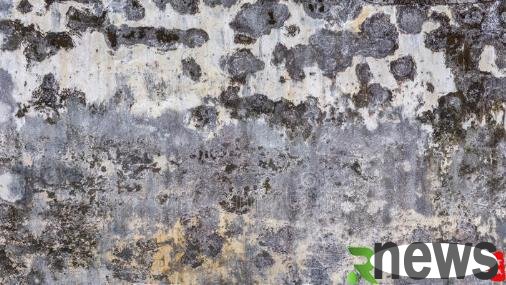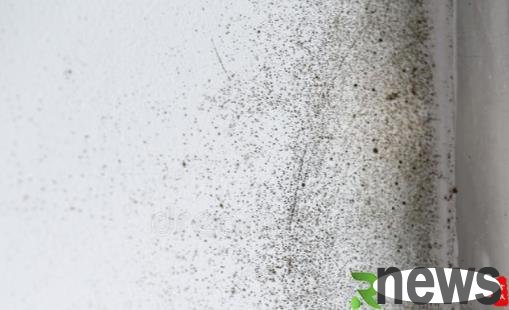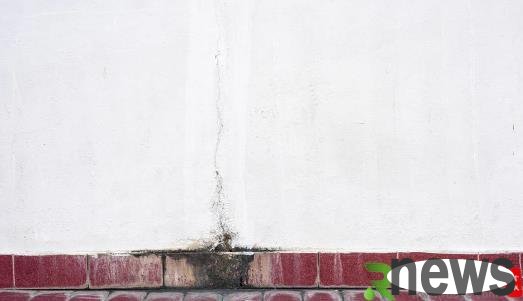What we fear most in our lives is that mold grows on the walls of our homes, which are not hygienic and difficult to clean. Moldy walls are a headache. What should I do to remove mold from the walls? Let’s take a look with the editor. Under what circumstances are

walls prone to mold?
1. The water supply and drainage pipes or heating pipes leak, causing the wall to get damp. Over time, the wall will become moldy.
2. External rainwater seeps into the room, causing moisture in the wall.
3. The wall insulation is not done well, resulting in a large temperature difference between indoor and outdoors. In this way, the water in the indoor air will condense onto the wall after it is cold, causing the wall to be wet.
Prevent moldy walls from being reminded:
1. Prevent moldy walls from being moldy. When decorating, you can first apply anti-seepage liquid on the wall to form a colorless and transparent waterproof adhesive film layer on the wall to prevent the immersion of external moisture.
2. If the walls often become moldy, it may be that the waterproof layer is not done well. In this case, a professional decoration team should ask the waterproof layer to be remade.
3. If you find black spots on the wallpaper, don’t wipe it with water if it’s dirt.

Simple tips for handling:
When mold spots appear on the wall, we can first use the simplest method to solve the problem. We have toothbrushes at home, or other brushes. These brushes can temporarily clean the mold on the wall. If we want to prevent the area of mold from expanding, we can also use a dry toothbrush to clean the mold first and then use a soft cloth to dip it in alcohol. In this way, the walls will become dry and mold will not be able to grow.
Bleaching water
Dilute with bleaching powder and appropriate amount of water, and after putting it into a spray water bottle, it can be used to solve the problem of mold spots on the wall. If you don't want the bleaching powder to your hands, you can also wipe it with a cloth. Once the wall is not wet, it will generally not cause mold spots when it remains dry.
Alcohol
If the mold on the walls in our house is not very serious, then we can also use alcohol to brush the walls. After diluting alcohol and water, brushing it on the wall will remove most of the mold. However, when we use alcohol, we must pay special attention and never let a large amount of alcohol touch ourselves. If you have masks, glasses and gloves at home, you should be equipped with them. And after applying alcohol to the walls, you should also pay attention to ventilation. Let the smell of alcohol fade away soon.
Open less windows
The editor does not mean that everyone will not open the windows, but that when the weather is wet, everyone should try not to open the windows, because if you don’t want mold to grow on the walls at home, you should keep the walls dry and humid weather. If you must ventilate, then we can turn on the dehumidifier or fan at home. If small water droplets or bubbles often appear on the surface of the furniture at home, you should pay attention to it. Once this happens, it means that the humidity in the home is relatively heavy.
The drain pipe or heating pipe at home leaks, causing the walls in our home to get wet. After a long time, the walls will naturally become moldy. If the water vapor attached to the wall penetrates into the room after it rains, it will also cause mold to develop on the walls in our homes.
Temperature difference is also a reason why the wall is damp and does not dry and moldy. Some decoration companies do not have the insulation function of the wall during decoration, which will cause a large temperature difference between the indoor and outdoors. In this way, the water in the indoor air will condense on the wall after it is cold, causing the wall to be wet. Then mold will naturally grow.

Remove stubborn mucus on the wall:
1. First, polish it with sandpaper. If there is any delamination, use a spatula to deal with flattening;
2. Then, if the wall is not flat, you need to repair and flatten it with putty;
3. Finally, if the wall is flat, it is recommended to apply a sealing primer first, and then apply latex paint.

How to prevent mold from walls?
1. Purchase indoor desiccant and as for indoor use, it can effectively remove indoor moisture. After the active ingredients of the desiccant are used up, they need to be replaced in time.
2. Open the windows frequently for ventilation, or turn on and change the fan to keep the indoor air circulating.
3. The best way to prevent mold from growing on the wall is to prevent condensation on the wall. In the northern region, when room temperature is 18 degrees Celsius and relative humidity is 60%, any object below 10.1 degrees Celsius will condensate.
There are three reasons for wall condensation, design, construction and use. The design reasons include: although the wall meets the moisturizing requirements, the beams, plates and columns have not been moisturized; the heating technical measures are not taken, and the radiator is improperly arranged; the convex corners and special columns on the windward surface of the exterior wall have not thickened moisturizing layers, resulting in the insulation effect not meeting the standards, etc. The construction reasons include: the insulation material does not reach the thickness specified in the design; it is strongly cracked and air-permeable; and no moisturizing and sealing treatment is performed between the joints between doors and windows and walls.
To prevent moldy walls, you can first apply anti-seepage liquid on the walls to form a colorless and transparent waterproof adhesive film layer to prevent external moisture from immersing. If the walls in our homes often become moldy, it is very likely that the waterproof layer is not done well during the decoration. If this is the case, a professional decoration team must ask a professional decoration team to make the waterproof layer again.
Open the windows frequently for ventilation, or turn on and change the fan to keep the indoor air circulating. Also keep the walls dry. Purchase indoor desiccant and as for indoor use, it can effectively remove indoor moisture. After the active ingredients of the desiccant are used up, they need to be replaced in time.
In response to the above problems, we should solve the problem by adding insulation layers, replacing the original insulation materials with high-efficiency insulation materials, and moisturizing and sealing treatment for ventilation. For condensation caused by improper use of the user, excessive indoor humidity should be avoided. As long as it is designed, constructed and used as required, the problem of mold on the wall can be completely avoided..
